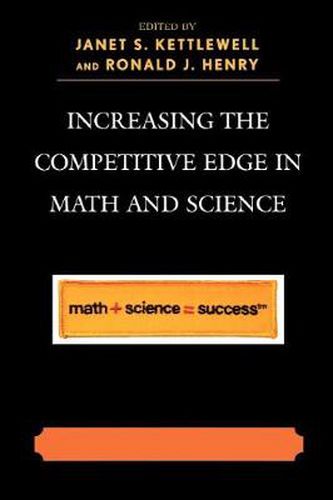Readings Newsletter
Become a Readings Member to make your shopping experience even easier.
Sign in or sign up for free!
You’re not far away from qualifying for FREE standard shipping within Australia
You’ve qualified for FREE standard shipping within Australia
The cart is loading…






The U. S. is losing its competitive edge in science, technology, engineering, and mathematics (STEM). Thomas Friedman warns that America is not producing enough young people in STEM fields that are essential for entrepreneurship and innovation in the 21st century (The World Is Flat: A Brief History of the Twenty-First Century, 2005).
Blue ribbon commissions and influential business and national leaders have issued reports on the seriousness of the situation but little collective effort has been made to advance solutions to the STEM crisis. Increasing the Competitive Edge in Math and Science lays out actions that can be taken by K-12 teachers and administrators, by higher education faculty and administrators, and by policy makers working collaboratively in school through college (K-16) partnerships to prepare American youth for meaningful participation in the twenty-first century science and technologically-based economy. If the steps described in this book are followed in states all across the Country, the resulting actions can help America to regain its competitive edge in science and mathematics.
$9.00 standard shipping within Australia
FREE standard shipping within Australia for orders over $100.00
Express & International shipping calculated at checkout
The U. S. is losing its competitive edge in science, technology, engineering, and mathematics (STEM). Thomas Friedman warns that America is not producing enough young people in STEM fields that are essential for entrepreneurship and innovation in the 21st century (The World Is Flat: A Brief History of the Twenty-First Century, 2005).
Blue ribbon commissions and influential business and national leaders have issued reports on the seriousness of the situation but little collective effort has been made to advance solutions to the STEM crisis. Increasing the Competitive Edge in Math and Science lays out actions that can be taken by K-12 teachers and administrators, by higher education faculty and administrators, and by policy makers working collaboratively in school through college (K-16) partnerships to prepare American youth for meaningful participation in the twenty-first century science and technologically-based economy. If the steps described in this book are followed in states all across the Country, the resulting actions can help America to regain its competitive edge in science and mathematics.